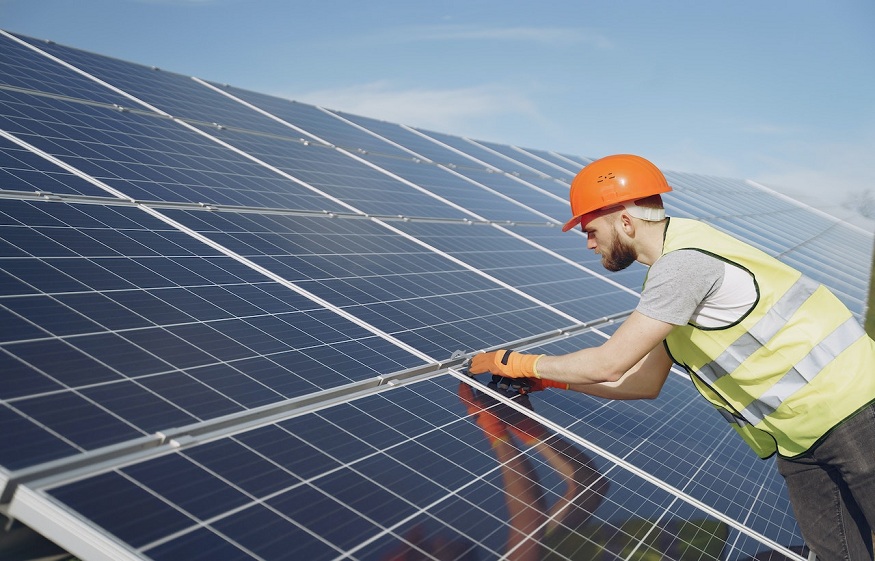Revamping an antiquated home to improve its energy efficiency can appear as a formidable endeavour, particularly for abodes which exhibit apparent signs of age and wear. Such homes may stand to gain significantly from multiple potential energy-saving initiatives. The preliminary stage entails a comprehensive assessment and examination of the plethora of choices accessible prior to making an informed decision. It is prudent to have a grasp of the anticipated costs, potential energy savings, and inherent challenges related to each initiative.
It is important to bear in mind that retrofitting aged properties frequently entails unavoidable risks and trade-offs. A comprehensive understanding of the property, the materials, and the construction techniques employed during its original construction may not be entirely known, thus presenting an inherent element of risk.
Therefore, it is recommended to allocate a contingency fund in your budget to accommodate unforeseen circumstances.
- Loft Insulation: As mentioned earlier, the Energy Saving Trust suggests that 25% of heat is lost through an uninsulated roof. This suggests that improving loft insulation can deliver a substantial increase in energy efficiency. Materials that can be used for loft insulation include mineral wool, sheep’s wool, cellulose, or synthetic materials such as polyurethane boards. It is generally advised that the thickness of the loft insulation should be 270mm. An added benefit of loft insulation is that it can also help to dampen sound from outside, providing an additional level of comfort.
- Double Glazing: Double-glazed windows have a gap between the two panes of glass which is filled with an insulating gas, thereby increasing energy efficiency. The enhanced insulation properties of double glazing can reduce heat loss, reduce condensation, and minimize noise pollution. However, double glazing may not always be the best solution for period properties due to aesthetics and the risk of damaging the architectural integrity of the building. Secondary glazing can provide an alternative option that is less disruptive to the original fabric of the building.
- Cavity Wall Insulation: Cavity wall insulation can be highly effective in reducing heat loss. However, this method is only suitable for houses built after the 1920s, which typically have a gap or ‘cavity’ between the external and internal wall. Older properties often have solid walls, which can still be insulated but using different methods. It’s also important to check for any existing damp problems before adding insulation, as this can exacerbate the issue.
- Internal Wall Insulation: Internal wall insulation, also known as dry lining, involves fixing insulation material to the inner surfaces of your external walls. This can be a great solution for older properties with solid walls. However, it can be disruptive and may reduce the internal floor area. Care must be taken to ensure the property can still ‘breathe’ and that moisture doesn’t become trapped, causing damp and potential structural damage.
- Heat Pumps: Heat pumps extract heat from the ground or air, reducing the amount of electricity needed to heat the property. Although the initial installation cost is high, the long-term savings can be substantial. They can be a good solution for properties in rural areas where mains gas is not available. However, they do require a certain amount of outside space for the installation and can be less efficient in very cold weather.
- Solar Panels:Solar panels convert sunlight into electricity, reducing reliance on the national grid. They can be installed on roofs or walls that face between the southeast and the southwest. There are also solar tiles available that can blend in more with the existing roof. However, the initial cost is high and they do rely on daylight to generate power.
- External Wall Insulation: External wall insulation involves adding a layer of insulation material to the outside of the building and then covering it with a render or cladding. This can significantly reduce heat loss but it does change the appearance of the property. Planning permission may be needed, especially for properties in conservation areas or if the property is listed.
- Floor Insulation: Older properties often have uninsulated solid floors or suspended timber floors, both of which can be insulated to improve energy efficiency. Solid floors can be insulated by laying a rigid insulation board on top, followed by a layer of screed or chipboard. Suspended timber floors can be insulated by laying insulation material between the floor joists. Both methods require significant upheaval and can be costly, but they can reduce heat loss by up to 20%.
- Roof and Wall Insulation: This is one of the most effective ways of retaining heat in your property. Insulating your roof and walls can lead to significant energy savings in the long run. This, however, comes with the potential disruption of your home life and potential challenges with compatibility with the property’s original aesthetic.
- Draught-Proofing: This involves sealing the gaps around windows and doors that let cold air in and warm air out. Draught-proofing is one of the cheapest and most effective ways to save energy and reduce heating bills. Professional draught-proofing can cost around £200 for a whole house, but DIY draught-proofing can be much cheaper.
- Energy-Efficient Lighting: Switching to energy-efficient lighting, such as LED bulbs, can save a lot of energy. LED bulbs are more expensive to buy than traditional incandescent bulbs, but they last much longer and use a fraction of the electricity.
- Energy-Efficient Appliances: Upgrading your old appliances to new, energy-efficient models can lead to significant savings on your energy bills. Energy-efficient appliances not only use less energy, but they also often perform better.
Preserving Historic Character While Improving Energy Efficiency:
Enhancing energy efficiency in a vintage property can sometimes be a delicate task due to the potential impact on the historical character of the building. It’s important to balance the need for improved energy efficiency with the preservation of historic features. Sensitive and well-planned energy efficiency improvements can often increase the value of the property without detracting from its historic charm.
Grants and Funding for Energy Efficiency Improvements:
There are several grants and funding schemes available to help homeowners improve the energy efficiency of their homes. These include the Green Homes Grant, the Energy Company Obligation (ECO), and various local authority schemes. It’s worth investigating these options to see if you might be eligible for any financial assistance.
In conclusion, there are many ways to improve the energy efficiency of a vintage property, and while some methods are quite straightforward, others may require professional advice and careful planning. It’s always a good idea to seek professional advice before undertaking any major renovations. A well-insulated and energy-efficient home is not only more comfortable to live in, but it can also save you money and help to protect the environment.

